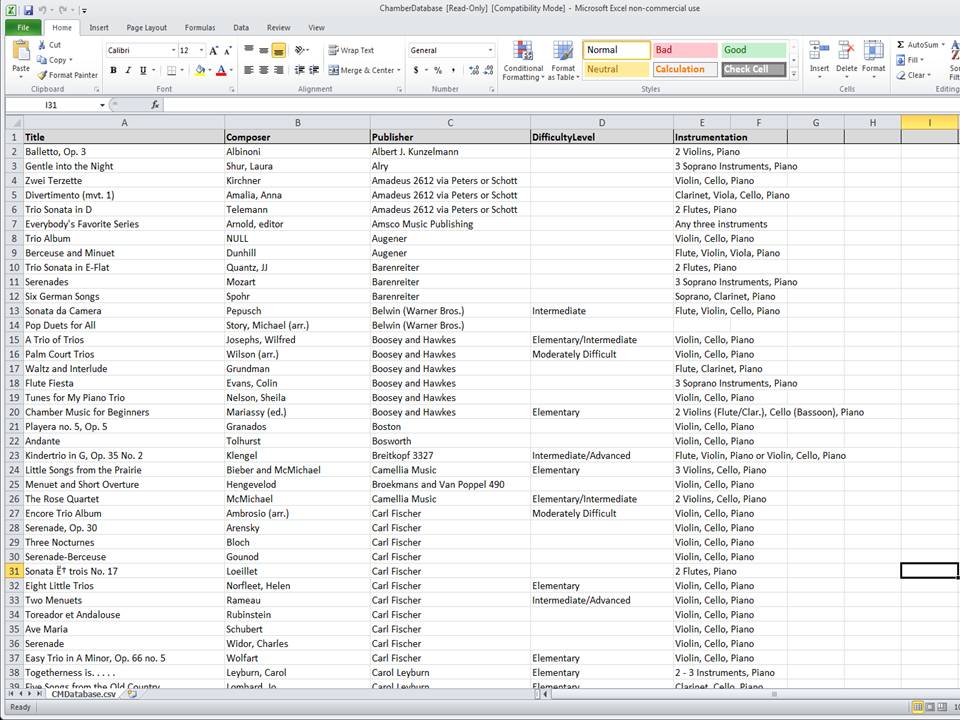Children and Chamber Music: Marie's MTNA 2016 Report Part 4
In her final report from her quick trip to MTNA's 2016 conference in San Antonio (find the others here), Marie Lee, good friend and guest blogger, shares how she was inspired by a unique session called "Children and Chamber Music: an Easy Solution!"
We have gained so much from Marie's reports. I hope you enjoyed them. At the end of this post, it'd be great to let her know of your appreciation and which report inspired your teaching the most.
When reading the class description, I completely expected this class to be for string teacher but thought I could use variations of the ideas with my piano students. Imagine my delight when I found out in the first two minutes that this was to be demonstrations of young pianists playing with a professional chamber ensemble!
Dr. Carolyn True, Professor of Music at Trinity University, and the delightful pianist of the SOLI Chamber Ensemble (clarinet, piano, violin and cello), led the presentation and demonstration. She started by introducing the monthly community event SOLI generously offers to young pianists in the San Antonio area called: I SOLO’d with SOLI 
Once a month, members of the SOLI Chamber Ensemble give back to their community by visiting the Musical Arts Center of San Antonio. Students of all ages bring a perfected classical solo from the repertoire they’re already learning and are given the opportunity to perform and listen as SOLI members Ertan, David, Stephanie and Carolyn add their musical voices to the piano solo. Students receive tremendous feedback and the experience of playing with professional musicians, along with their very own themed t-shirt.
It’s been a unique way of getting area students excited about perfecting the repertoire they’re learning in lessons, more interested in classical music, and most importantly, discovering the joy of playing with other musicians.
Carolyn must have read her audiences’ minds because we all were thinking the same thing.
“This is really wonderful, but how in the world would I implement this into my studio?”
Chamber Music Challenges
Here are the main challenges and how she addressed them.
- Student’s lessons are already packed. No time to add “one more piece” to learn.
Carolyn addressed this issue by strongly suggesting we don’t add “one more thing” to learn—use the pieces we’re already teaching our students.
- Finding appropriate level partners. Use professional musicians.
Problem solved!
- Scheduling partners.
Once a month event at the arts center.
- Repertoire limitations—finding appropriate leveled arrangements.
Carolyn gives resource ideas below along with having the professionals write their own parts to go with the student’s piece if arrangements aren’t available.
Benefits of Chamber Music
- Listening to musical layers (other musical lines and instruments) while playing your own
- Listening to pedaling.
- Rhythmic stability (establishing an inner pulse and establishing an appropriate tempo.)
- Communication.
- Creativity.
- Articulation of musical thoughts.
- Listening to sound production. (Dynamic balances--Can you hear the violin? Can you hear the cello?)
During the presentation, Carolyn had the piano student assign a level from 1-10 for each instrument and they experimented with balance of the different parts until the student could clearly hear which instrument needed to be louder, softer, etc. A fun part of the presentation was when they played the game “Play it Bad” and the student had to assign balance levels that were completely opposite of what would be appropriate. SOLI members were delightful in their interpretations of “bad” balance and had the audience and student pianist giggling.
- Learning to give physical cues and make eye contact to indicate starting and ending points. Greater understanding of physical preparation.
Carolyn didn’t let the students count in; they gave the physical cue of dropping their head back, taking a large “sniff” through their nose, and bringing their head forward.
Carolyn brought in three young students from area teachers, all prepared with a classical solo. They were easier classical pieces you’d recognize like Beethoven’s Minuet in G, Schumann’s Soldier’s March and Minuet in D from the AMB Notebook.
We were entertained and educated as Carolyn brilliantly led the students through the activities above. We watched as the “lights turned on” for these students as they discovered how to listen to themselves within the ensemble. What a charming and inspiring experience for all!
Here's a short video link from actual conference presentation:
Chamber Music Resources
1) MTNA database of chamber music resources organized by instrumentation (under construction  but can print or download a PDF)
but can print or download a PDF)
2) Twenty Triolets for Piano, Violin & Cello, Volumes 1 & 2 - Joseph McSpadden (mainly Suzuki repertoire) http://www.young-musicians.com/product-p/909.htm
3) Playing Together by Kiyoshi Tamagawa. Twelve pieces from standard repertoire for advancing pianists with added violin and cello parts. Self-published book. Contact him to purchase: keybedder@yahoo.com
Thanks again, Marie for your inspirational reporting!
Just a reminder that it's not too late to sign up for the 88 Creative Keys Groove Your Theory, a one-of-a-kind webinar that is sure to boost your technique and creativity as well as that of your students. The handout alone is extensive, well-organized and a gold mine.
You are not going to want to miss this. If you must, still register and you'll receive the recording of the webinar which you can watch over and over.
If you missed our first webinar Top Pop Tips with Tim Topham, that is now available for purchase here.
-Leila




